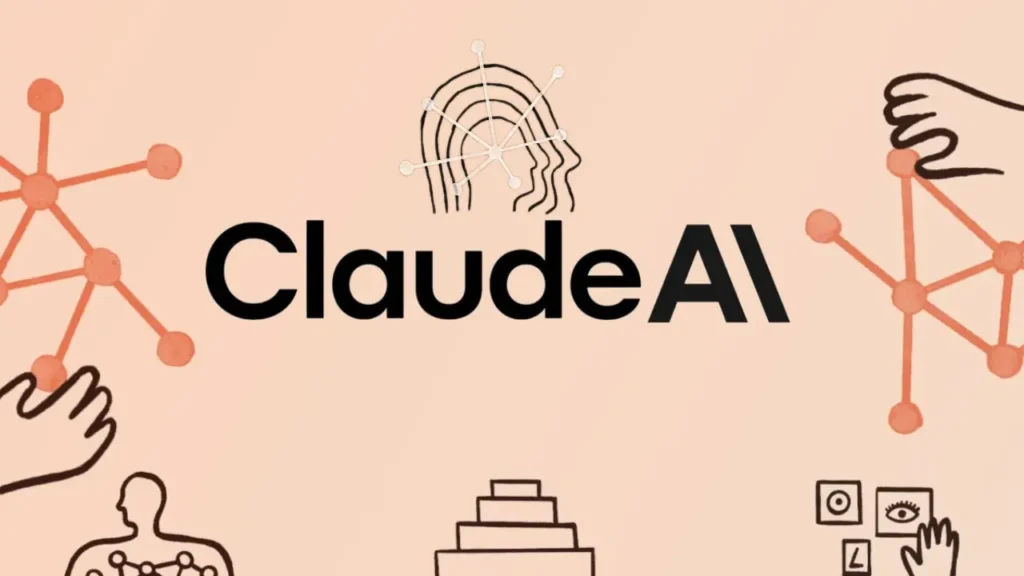How to get Claude Free APIs? 3 Ways!

In the rapidly evolving landscape of artificial intelligence, Anthropic’s Claude API has emerged as a compelling alternative for developers and enterprises seeking powerful, safety‑focused language models. With the release of Claude Opus 4 and Sonnet 4, along with innovative features like Artifacts, prompt caching, and no‑code app creation directly within the chat interface, the barriers to entry have significantly lowered.
What is the current landscape for the Claude API?
Overview of the Claude API
The Claude API, developed by Anthropic, provides programmatic access to Claude’s conversational and text‑generation capabilities. Through RESTful endpoints, developers can submit prompts, adjust generation parameters, and receive model outputs for tasks such as summarization, code generation, and translation. Its safety‑first design and state‑of‑the‑art performance have made it popular across industries.
Overview of Claude models and access tiers
Anthropic offers several Claude models—Opus 4, Sonnet 4, and legacy versions—via a self‑serve API platform. Developers can choose from usage‑based tiers, automatically increasing rate limits, and simple pay‑as‑you‑go pricing, ensuring scalability for projects of any size . All Claude models, including the most advanced Opus 4, are accessible through the same API endpoint, with tiered pricing beginning at a free level and scaling according to consumption.
Recent innovations: Artifacts and no‑code apps
In late June 2025, Anthropic launched Artifacts—a new feature that allows users to build, host, and share AI‑powered applications directly within the Claude chatbot, without writing code or managing API keys . Artifacts transform static outputs into interactive apps, democratizing AI development for non‑technical users and reducing friction for prototyping.
What free access options are available for the Claude API?
Student API credits
Anthropic has launched a dedicated program offering free API credits to university students. By filling out a simple application form on Anthropic’s website, eligible students can receive credits that allow experimentation with various Claude models at no cost.
Free-tier Sonnet model access
Among Claude’s model lineup—Haiku, Sonnet, and Opus—Sonnet 4 is uniquely available to free users. This hybrid model provides both rapid-response (“near-instant”) and extended reasoning (“think longer”) modes, enabling developers to prototype advanced use cases without subscription fees.
Startup and developer grants
Anthropic periodically partners with cloud platforms like AWS and Google Cloud to offer promotional credits for Claude API usage. Keeping an eye on platform announcements can unlock \$300+ in free credits, which are often applicable to Claude via integrations such as AWS Bedrock or Google Vertex AI .
Third‑party platforms like CometAPI
For developers in regions where direct access to Anthropic may be restricted, platforms such as CometAPI offer a unified interface compatible with OpenAI‑style calls. You simply point your OpenAI SDK at CometAPI’s endpoint, set your key, and invoke Claude models (and even Google’s Gemini) without altering your codebase. CometAPI handles authentication, routing, and rate‑limiting, allowing you to leverage shared free quotas paid for by the platform or its sponsors .
How do I sign up for an Anthropic account and generate an API key?
Step 1: Create your Anthropic account
- Navigate to Anthropic’s website and click Sign Up.
- Provide your email address and create a secure password.
- Verify your email through the confirmation link sent by Anthropic .
Step 2: Access the API dashboard
- Log in to your account dashboard.
- Locate the API Keys tab in the navigation menu.
- Click Create New API Key—this will generate a unique token you’ll include in your
Authorization: Bearer <API_KEY>header for all requests .
Step 3: Note your usage quotas
Upon creation, free-tier accounts will see allocated quotas in the dashboard:
- Sonnet usage tokens: Up to 50,000 tokens per month.
- Rate limits: Up to 60 requests per minute.
Understanding these limits upfront helps plan efficient prompt engineering and batching strategies.
How can I apply for student or startup credits?
Student builder program
Anthropic’s Student Builder Program is designed to foster academic innovation. To apply:
- Visit the Student Builders page on Anthropic’s site.
- Fill out your university affiliation, expected graduation date, and a brief project description.
- Await approval and credit allocation—typically processed within 5–7 business days .
Pro Tip: Emphasize research or open-source contributions in your application to increase approval likelihood.
How to use CometAPI?
CometAPI is a unified API platform that aggregates over 500 AI models from leading providers—such as OpenAI’s GPT series, Google’s Gemini, Anthropic’s Claude, Midjourney, Suno, and more—into a single, developer-friendly interface. By offering consistent authentication, request formatting, and response handling, CometAPI dramatically simplifies the integration of AI capabilities into your applications. Whether you’re building chatbots, image generators, music composers, or data‐driven analytics pipelines, CometAPI lets you iterate faster, control costs, and remain vendor-agnostic—all while tapping into the latest breakthroughs across the AI ecosystem.Register and get a certain amount of free credits.
1. Get an API Key
Sign up for a free CometAPI account to receive a token (formatted as ) in your dashboard. This token grants access to all integrated models and is used in the header of API requests .sk-XXXXXAuthorization
2. Configure the Base URL
In your codebase, set the base URL to:
https://api.cometapi.com
All subsequent calls—whether text completion, image generation, or file search—are routed through this single endpoint.
Different clients may need to try the following addresses:
- https://api.cometapi.com
- https://api.cometapi.com/v1
- https://api.cometapi.com/v1/chat/completions
3. Make API Calls in OpenAI Format
CometAPI accepts requests following the OpenAI API schema. Developers can access Claude Opus 4 and Claude Sonnet 4 API through CometAPI, the latest models listed are as of the article’s publication dateTo begin, explore the model’s capabilities in the Playground and consult the API guide for detailed instructions.
How does a serverless reverse proxy enable free usage?
Deploying a serverless function
A popular technical approach is to host a reverse proxy on platforms like AWS Lambda, Vercel, or Cloudflare Workers:
- Write a small handler that reads your Claude API key from environment variables.
- Forward client requests to Anthropic’s API, appending your key in the Authorization header.
- Return model responses to the client, effectively hiding the key from front‑end code.
def lambda_handler(event, context):
api_key = os.getenv('CLAUDE_API_KEY')
headers = {'Authorization': f'Bearer {api_key}', 'Content-Type': 'application/json'}
response = requests.post('https://api.anthropic.com/v1/complete', headers=headers, json=event['body'])
return {'statusCode': response.status_code, 'body': response.text}This serverless proxy consumes your free trial credits on the backend, while exposing a simple endpoint to your application—minimizing the risk of key leakage ([apifox.com][2]).
Security and management
- Rate limiting: Implement request throttling at the proxy to prevent abuse.
- Logging: Capture usage patterns for cost analysis and debugging.
- Environment segregation: Maintain separate keys for development and production.
By centralizing key management, you safeguard your API credentials and gain fine‑grained control over the free‑tier quota you receive.
What best practices should you follow when using a free Claude API key?
Securing your key
- Never embed keys in client‑side code or public repositories.
- Use environment variables or secure vaults (e.g., AWS Secrets Manager).
- Rotate keys periodically and revoke unused ones.
Monitoring usage
- Track token consumption to avoid overruns.
- Set alerts for approaching quota limits, using cloud‑provider or third‑party monitoring tools.
- Analyze patterns to identify inefficient prompt formulations that can be optimized.
Planning upgrade path
Free access is designed for experimentation, not production scale. As your usage grows:
- Evaluate paid plans based on cost per token and concurrency needs.
- Benchmark Claude’s performance against competitor models.
- Budget for higher tiers well before your free credits exhaust, to prevent service interruption.
By adopting these practices early, you’ll transition smoothly from free tiers to enterprise deployments.
Conclusion
Navigating the landscape of free AI API access can seem daunting, but with a mix of student programs, free-tier model availability, Third‑party platforms, and innovative in-app features, you can integrate Claude’s powerful capabilities into your projects without incurring costs. By understanding the sign‑up process, applying strategically for credits, optimizing your usage, and leveraging features like Artifacts, you’ll maximize your free access while laying the groundwork for potential paid upgrades as your needs grow. Stay proactive by subscribing to official channels and engaging with the developer community to capitalize on every new opportunity Anthropic and its partners offer. With this guide as your roadmap, you’re well-equipped to harness Claude’s potential at minimal to zero expense.



![Claude Agent[Skills] What it is and how to use](https://www.cometapi.com/wp-content/uploads/2025/10/Claude-AgentSkills-What-it-is-and-how-to-use-710x373.webp)